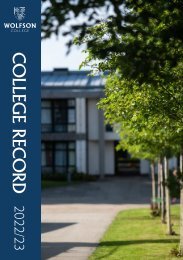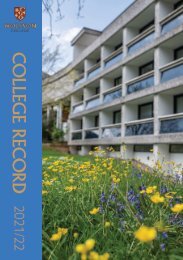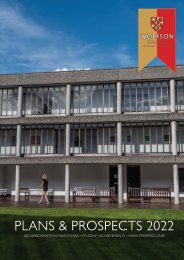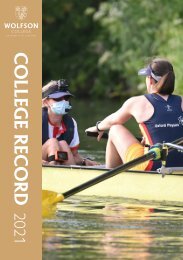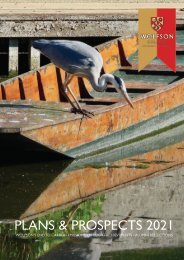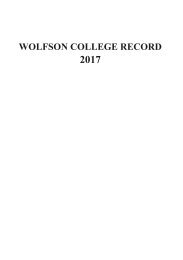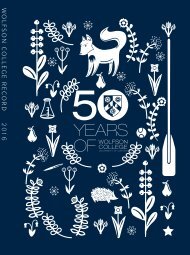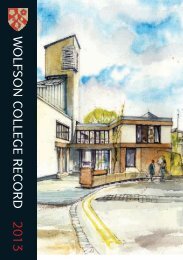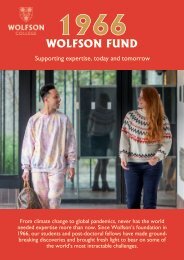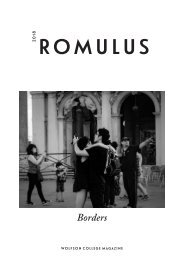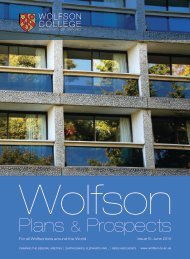Create successful ePaper yourself
Turn your PDF publications into a flip-book with our unique Google optimized e-Paper software.
And what, precisely, was the relation of any or all of these to the original Bristol registration<br />
number? Buses had been unfeelingly butchered and carved up, the chassis of one being<br />
combined with another’s body, and engines endlessly dispersed. The task he had set himself<br />
was to trace every single integral part of every single bus, and to redeem so far as he could,<br />
at least on paper, the lost identity of each. There followed a rigmarole of labyrinthine<br />
complexity involving numbers, parts and far-flung places.<br />
The eloquent chronicler of the lives of these mute creatures developed an almost<br />
Dantesque intensity and sweep as his litany droned on. His eyes shone and flashed as one<br />
possessed, and it became clear that the very quiddity of bushood was somehow at stake<br />
in some vast cosmic drama into which, unaccountably, we were being permitted to peep,<br />
but which we could never hope to understand. Yet there was some kind of consummation:<br />
only last year, on a trip to – was it Singapore? – he had traced the last chassis, the circle had<br />
closed, the mission was now complete. Then, at midnight, he suddenly rose, and stalked out<br />
with all the inscrutable mystery of a high-priest.’<br />
MEMORIES OF WOLFSON<br />
There is now a postscript to this article. The <strong>College</strong> Archives were contacted by Anthony<br />
Moyes, who informed us that Peter Hulin’s great work on the Bristol Bus – his photographic<br />
catalogue – was now complete. Mr Moyes kindly sent us some notes, together with a few<br />
photos. Some (slightly revised) extracts from his notes appear below.<br />
Peter Hulin was a founder member of the Bristol Interest Circle, in 1938. This was a group of<br />
people who admired the buses manufactured in his native city of Bristol. ‘Bristol’ buses were<br />
quite successful in the British market. Eventually the bus side of the Bristol company was<br />
absorbed into British Leyland in 1968.<br />
Many ‘Bristol’ vehicles survive in preservation because they were well-engineered, economical,<br />
more than fit for the purpose, aesthetically pleasing, and consequently long-lived and<br />
widely respected. The Bristol Vintage Bus Group was formed in 1972; it is the BVBG which<br />
compiled the catalogue.<br />
From the 1930s particularly, many ‘Bristol’ buses were sold to businesses and municipal<br />
operators all over Britain. So, for someone keen to see every ‘Bristol’ bus made, quite a lot of<br />
travel would be needed.<br />
The first 150 entries in the Hulin catalogue give few details of where or when he photographed<br />
them, and it appears to have started in the early 1940s. But from 1951, he began<br />
to record where and when he took each photograph. The catalogue gives a good idea of his<br />
pilgrimages, which would take him to places not generally on tourist circuits.<br />
From the later 1940s, Bristol buses started to be exported outside the UK, and Peter<br />
documented many of these on his travels as a Near Eastern archaeologist. The largest single<br />
delivery was of 100 chassis to the Nizam of Hyderabad’s State Railways in India, in 1948.<br />
Over 100 were also exported to South Africa. In June and July 1972 he was able to see the<br />
last survivors of these machines. His last South African bus pictures, in August 1975, show<br />
‘Bristol’ single deckers only in scrapyards. Peter also encountered some in places such as<br />
118<br />
COLLEGE RECORD <strong>2019</strong>



